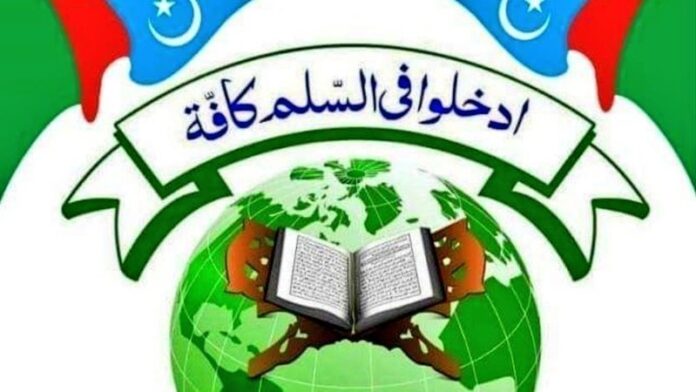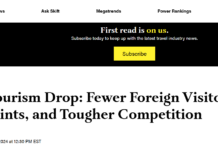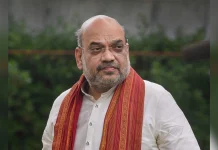On 11 August 2021, just three days after the National Investigation Agency (NIA) raided around 56 locations linked to the banned Jama’at-e-Islami in Jammu and Kashmir, three former Amirs (chiefs) of the organisation issued a longish and a very important statement to the press. The three-part statement challenges the charges levelled against the organisation and explains in detail the evolution of the Jama’at-e-Islami in Jammu and Kashmir, its core ideology and relations with Hurriyat Conference and armed groups like Hizbul Mujahideen. It was the first statement issued by the organisation since it was banned in 2019.
By Manzoor Ahmad
The Jama’at-e-Islami Jammu and Kashmir was banned by the Ministry of Home Affairs for five years on 28 February 2019 under section 3 of the Unlawful Activities (Prevention) Act. The Union Home Ministry, in a Notification, declared that Jama’at “has been indulging in activities which are prejudicial to internal security and public order and have the potential of disrupting the unity and integrity of the country”. The decision of banning the Jama’at as an “unlawful association” was confirmed by the Unlawful Activities (Prevention) Tribunal in August 2019, after it perused various evidences including the background note and affidavits submitted respectively by the Union government and the Jammu and Kashmir Police about the “secessionist tendencies” of Jama’at.
After the Tribunal upheld the decision of the Union government, the Jama’at moved the Delhi High Court challenging the ban and the Tribunal Order of 27 August 2019 and filed a petition under Articles 226 and 227. It is pertinent to mention that this was the third time Jama’at was banned. The first time it was banned was in 1975 when it protested against the Indira–Abdullah Accord. The second ban on the organisation was imposed in 1990 which lasted till 1995.
Interestingly, the petition that Jama’at submitted to the Delhi High Court and the statement issued by the three Jama’at leaders have the same tone and content. Both documents seek to clarify that the sole purpose of the organisation is to “spread the word of Islam”. Both documents emphasise that its constitution does not support “agitational politics” and that it was formed purely as a “socio-religious” group committed to democratic and constitutional methods. The idea that the organisation supports militancy is a “misconception” and is the creation of those with “vested interests” against the Jama’at.
It is true that Jama’at is a socio-religious and political organisation and is committed to social reformation of the society, but that is not the whole truth. From the very beginning, Jama’at had a clear political position. It always advocated the “Right to Self-determination” for Jammu and Kashmir. This is purposely not touched either in the petition or in the statement issued later. This is a timely tactical move by the leadership to save the cadre and the organisational structure from any kind of damage so that they are able to focus on Islamisation of the society at the grassroots level till they find a favourable time for operating at a much larger platform. The fact is that Jama’at is explicitly an Islamist organisation free of secular pretentions. This will remain unchanged though there could be changes in its strategies with changes in the overall political situation.
Formation and Changing Strategies
The Jama’at-e-Islami as a separate organisation in Jammu and Kashmir was officially established in 1952. Till that time it operated under the Constitution of Jama’at-e-Islami India.
In the 1950s, the Jama’at in Jammu and Kashmir reached out to people in different regions of the state and started mobilising them for the establishment of a system based on Islamic principles. Starting with just four members, the organisation now has 5000 basic and committed members across the erstwhile state of Jammu and Kashmir. It is important to mention here that one becomes a basic member only after years of training and scrutiny. The mobilisation drive was successful because it happened through Jama’at’s own schools, madrassas, libraries and most importantly and paradoxically, through participation in elections. It seems that Jama’at violated its own constitution by contesting elections in a secular country. The fact is that it was done for the fulfillment of the larger Islamisation project. Elections were used as a tool to expand the base to reach out to more and more sections of people.
The Jama’at succeeded in achieving its preliminary objective. The message and the ideology of political Islam reached every corner of Jammu and Kashmir, which appealed to the educated younger generation belonging to the lower middle-class families. At the same time, the emphasis on political Islam was not just a tacit challenge to the Indian rule but it also challenged the conventional Sufi traditions which encouraged coexistence of different cultures and had existed in the state for centuries. The Sufis had failed to address the issues affecting the educated youths who were witnessing transformation in every sphere of their lives. The Jama’at, which had heavily invested in schools and in the distribution of Islamic literature, especially books and pamphlets written by Maududi, easily filled this gap by introducing people to a more activist version of Islam and integrating them with the modern world.
By the 1980s, the organisation was comparatively stronger and in a better position to influence the public opinion. It actively participated in electoral process from 1969 to 1987. The Jama’at was an important constituent of Muslim United Front (MUF) in the late 1980s, which contested election against the National Conference–Congress alliance. Without Jama’at, the idea of MUF would have never materialised because Jama’at was the only religio-political party, which had resources and manpower with experience in electoral politics. The alleged rigging of the election and the consequent failure of MUF triggered armed insurgency in the valley of Kashmir. Many Jama’at leaders including Muhammad Yusuf Shah, who later came to be known as Sayeed Salahuddin now heading the United Jehad Council (UJC), crossed the Line of Control (LoC) for arms training. Although Jama’at consistently denied having any direct role in insurgency, a founding member of the Pakistan-sponsored Hizbul Mujahideen (HM) called HM as the “sword arm of Jama’at”. Later, it was associated with the Hurriyat Conference from the early 1990s till 2008 when it formally distanced itself from the conglomerate. The decision was the result of a decade-long debate within the organisation.
The Jama’at has consistently changed its strategy in response to the changing political reality in the state. It does this without deviating from its core ideology. Scholars who have extensively written about Jama’at believe that the organisation’s own framework allows it to take “multifarious positions” in order to achieve its desired objectives. The fact is that all Islamist movements including Jama’at abhor the doctrine of secularism and have an antagonistic relationship with secular states. If this is not expressed explicitly, it does not imply acceptance of a secular doctrine. Islamists conveniently shift to a strategy of “war of position” or in other words an “intellectual moral reform” of a society if they find it difficult to confront a secular state at any particular time.
Jama’at is the only religious organisation in Jammu and Kashmir that has remained politically active since its formation in 1952. Its politics is a bit complex. They have been a part of the mainstream politics and at the same time vociferously represent political Islam. The founders and various other leaders have from the very beginning employed a much nuanced and ambiguous strategy to achieve their objectives. With this, they have been able to Islamise and politically mobilise people across the state. However, these strategic maneuvers have not gone unnoticed. The repeated ban on the organisation by the Union government reaffirms this fact.
This article first appeared in www.idsa.in and it belongs to them.








